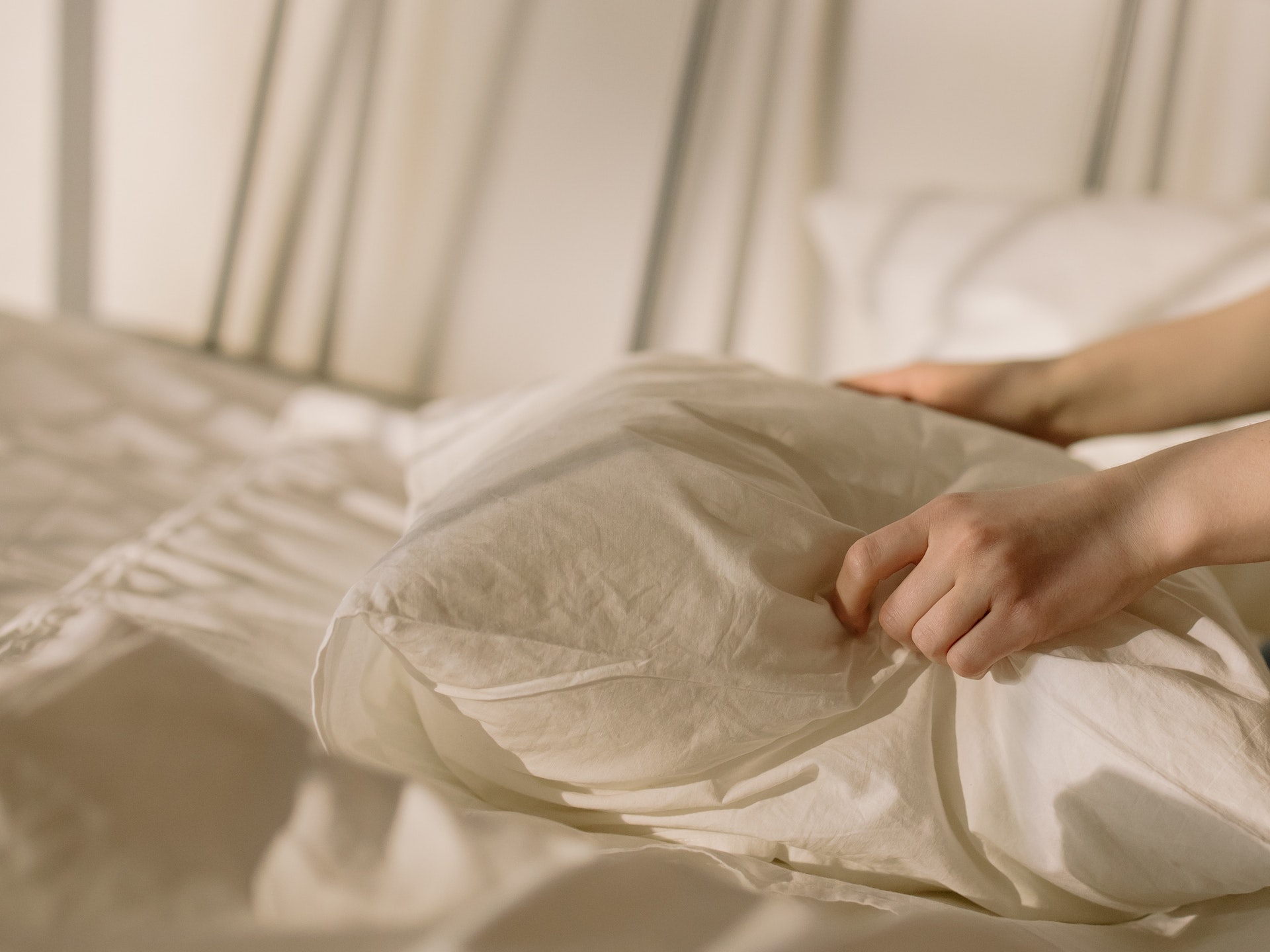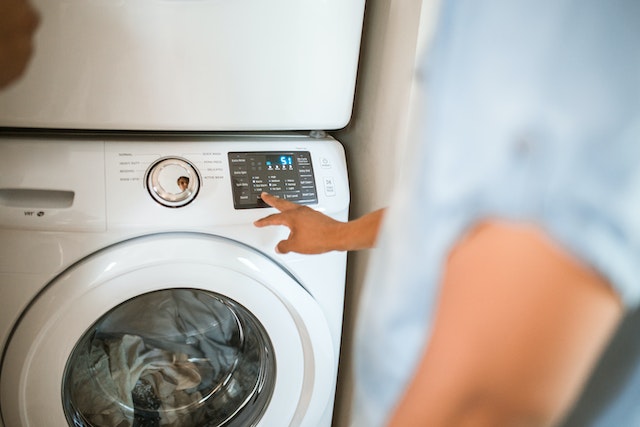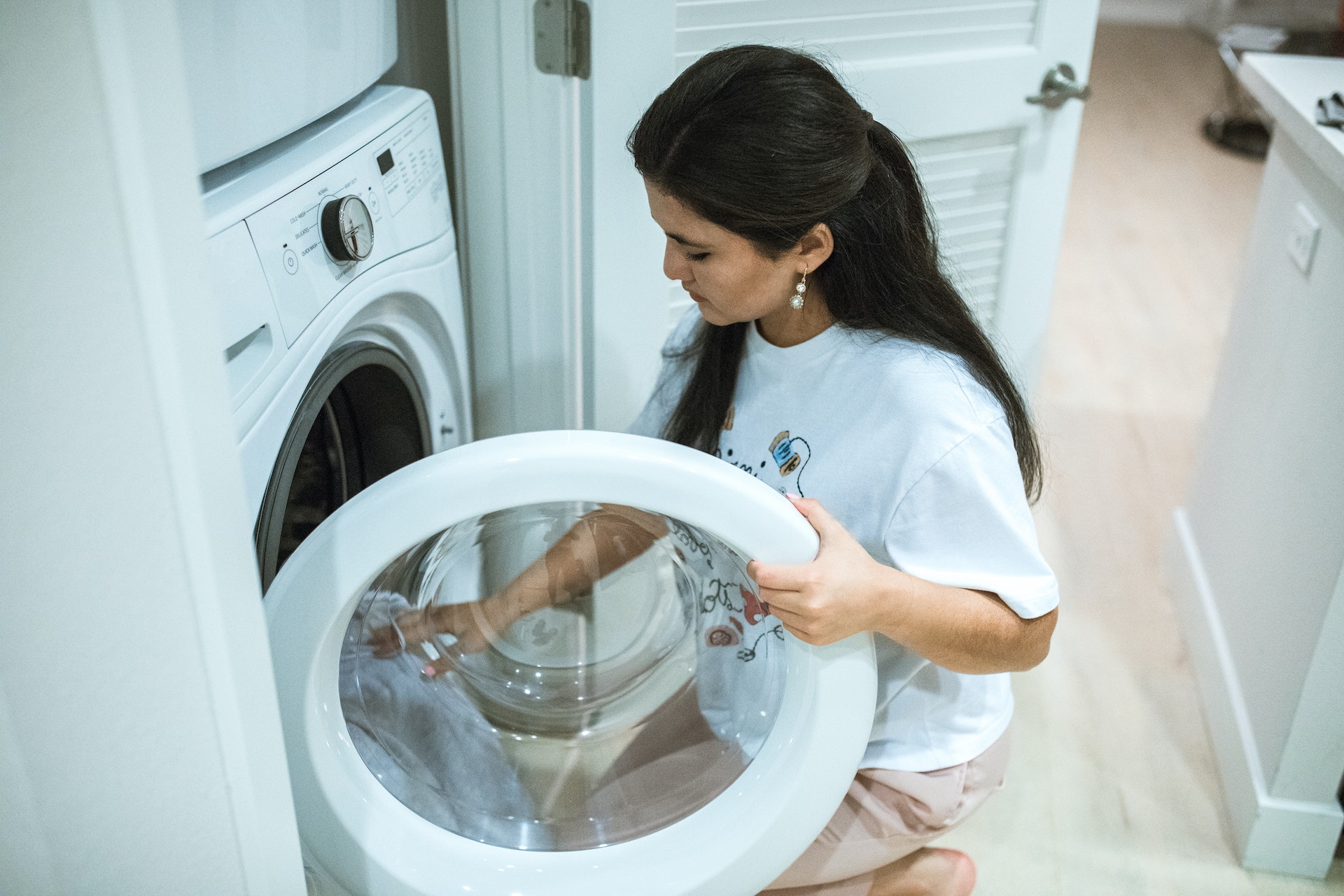They don’t offer courses on “how to wash a pillow with care.” However, that information would really come in handy for someone like you, who is searching the internet for that information.
Whether you have a pillow you love deeply and don’t want to harm by washing it incorrectly, or you are trying to get some life back on an older one, there are right and wrong ways to wash a pillow. That’s where we come in.
Linens and clothing enter the washer and dryer frequently, yet we overlook the pillow. Yes, there are pillowcases and pillow protectors. However, did the pillow get a separate wash?
A clean pillow next to clean linens just makes sense. Before stuffing pillows into the washer/dryer, consider the pillow’s condition, care label, instructions on how to wash a pillow, and how often to wash.


Is It Worth Cleaning?
At first glance, a pillow is in excellent condition. Sure, it’s flat and has stains, but a good wash can make it look brand new again. The unfortunate reality is older bed pillows are better suited as something else. Before learning how to wash a pillow, a simple test will determine if the pillow is worth washing.
To determine where pillows go, fold the pillow in half. Let go. If the pillow returns to form, the pillow is worth washing. If the pillow remains folded, toss or re purpose the pillow and purchase brand new pillows.
Re-purpose examples include dog pillows, throw pillows, and couch stuffing. Washing lifeless pillows increase the pillow lining’s chances of tearing apart. The purpose of the test is to see if the pillow can withstand washing.
The Care Label
Never wash a pillow without reading the care label attached to it. Better yet, never remove the care label from the pillow unless you store the label in a secure place. To learn how to wash a pillow, three types of care instructions exist, and it is dry clean, hand wash, and machine wash. Most pillows are machine washable, but a few are hand wash or dry clean only.
Because the care label is strict on instructions for a good reason, follow the instructions. Straying away from the instructions causes the pillow to lose color and its bouncy feel along, making it not the same as before.
Additionally, consider the stuffing material such as cotton, polyester, feather, wool, memory foam, gel, and buckwheat. Different material requires different washing techniques to maintain cleanliness.
How Often Should You Wash the Pillow?
Wash pillows two to four times a year, but the precise number depends on frequently you use it. It’s imperative to follow the routine because overdoing it causes a pillow to lose shape quickly.
Conversely, never learning how to wash apillow builds dust, dirt, sweat, and grime, causing allergies and breathing problems. The pillow’s appearance turns the once white pillow a dingy yellow color. Therefore, washing pillows keep it fluffy, fresh, and allergy-free.
How to Wash a Pillow
The best washer to use is the front loading washer. This washer allows side-by-side movement to wash and rinse pillows. The shaky movement from top loading washers keeps pillows afloat and stagnant in one place with a strong possibility of dry spots after washing and rinsing. Now prep the pillows by removing the pillow protector and the pillowcase.
Wash both separately from the pillow. Before washing, vacuum the pillow to remove dirt and debris while loosening up deeper dirt and debris. Then, place it in the front load washer. If a top load washer is the only thing available, wash the pillows twice. On the second cycle, flip the pillows so the parts currently at the top end up at the bottom. If there’s no care label, cotton and polyester are likely candidates for machine washing.
What You SHOULD Do
Load two pillows at a time. Two pillows in the washing machine take the same amount of spins with even distribution while maintaining durability. Better yet, tie two pillows together around the middle and ends (one on top of another lengthwise), and throw it in the wash together. This reduces fiber clumping. If one pillow is in the washing machine, the pillow absorbs all the spins. The result is a pillow losing its durability and bouncy feel at a faster rate.
Use liquid laundry detergent instead of powder to clean pillows. It’s difficult for washing machines to remove all clumps and residue from pillows after the washing cycle completes. Add washing soda, baking soda, or bleach to whiten yellow-looking pillows.
What You SHOULDN’T Do
While fabric softener smells good on clothes, fabric, and linens, it does the opposite for pillows. Fabric softener on pillows reduces pillow fluffiness and weigh down the stuffing like cotton and polyester.
Do not place foam pillows in the washing machine. Foam pillows easily tear during the harsh washing, rinsing, and spinning process. The dryer’s heat can melt the foam.
No other linens or clothing should be in the washing machine when the pillows are washing. The pillows need as much space as possible to stay in mint condition.


Washing Steps
Load the pillows into the wash and close the door tight. Choose the wash cycle recommended on the care label. If the care label is missing or damaged, learn how to wash a pillow through either a warm water gentle cycle, a cold-water rinse cycle, and a cold-water spin cycle.
Pour a gentle to mild liquid detergent in the correct slot. After washing is complete, use the cold-water rinse cycle once more. This cleans all detergent from the pillow, especially around the center. Run the cold-water spin cycle one more time to ensure no water remains.
Drying Steps
Set the drying cycle according to the pillow’s care label. The recommended method for pillows without a care label is tumble dry low heat. Check for dryness every half hour. As a precaution, use two tennis balls in the dryer to speed up the drying process and fluff the pillow as it dries.
An additional or alternate solution is using a set of towels to speed up the drying process. If the pillows remain damp after the drying cycle, turn on the dryer and keep it on moderate heat for one hour. If the care label doesn’t want the pillow in the dryer, let drip-dry on a rack or hang outside on a clothesline. Thoroughly check the pillow for damp spots and flip the pillow to ensure dryness.
How to Wash a Pillow Through Dry Cleaning
Dry cleaning requires a professional to clean the pillow without water and soap. These pillows will mention dry clean only on the care label. Therefore, take dry clean pillows to a nearby dry cleaner and drop it off. The professionals will place a label on the product to separate it from other garments and linens.
The expert may also give a time and date to retrieve the pillows. Upon returning home, air out the pillows to release any fumes. Dry cleaning is expensive, yet it’s the most hands-free choice as professionals take care of the cleaning for you.
How to Wash a Pillow by Hand
While most machine-washable pillows are hand washing eligible, memory foam, gel, feather, and synthetic pillows are likely candidates to hand washing. These pillows will tear apart during the washing and drying cycle. Therefore, hand wash dirty areas with a towel, water, and mild detergent or soap. Gently rub the dirty areas.
Then, press the dirty area so it can penetrate the deep dirt. Rinse the detergent/soap from the towel. Use a towel and water to press the dirty areas in succession until the pillow returns to normal. Repeat the entire process for every stain. Be careful during the foam cleaning process as foam tears easily.
For machine-washable pillows, place the pillow in a water, bleach, and soap/detergent container inside the bathtub. Immerse both sides in the mixture and let it soak for 30 minutes.
Squeeze the dirt and water out of the pillow and rinse the pillow under cold water afterward until no soapy residue exists. Leave the pillows in a ventilated area such as a drying rack, a clothesline, or a fan.
The correct drying process depends on the instructions. Most machine-washable pillows can go in the dryer. However, memory foam pillows dry better on a clothesline or rack. Press a dry towel on wet parts of the pillow to speed up the drying process.
After Drying Steps
Lay flat to finish drying. Fluff out the pillow for shape restoration, dust removal, and wet spots. Wet spots provide an opportunity for mold and mildew to develop and ruin the pillow. Let the pillow air dry for two days to evaporate water buried inside the stuffing.
Complete the how to wash a pillow process by returning the pillow to the bed with a new or freshly washed pillowcase and pillow protector. Continue to fluff the pillow after each use to maintain shape, and air dry once a month to remove stuffy smells.
Sadly, all pillows end up in the trash no matter how careful. Age increases and function decreases. However, washing pillows regularly keeps them in top shape for the long haul. A clean pillow encourages a good night sleep, eliminates neck and back pain, and reduces allergy and respiratory concerns. Therefore, it’s worth the effort to know how to wash a pillow.





